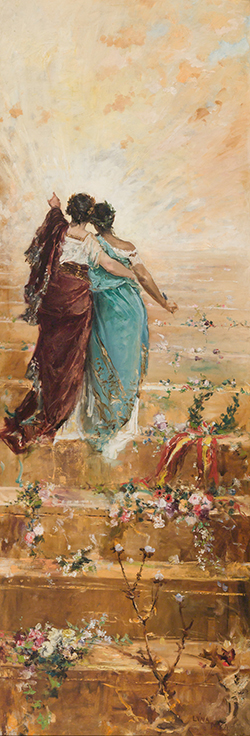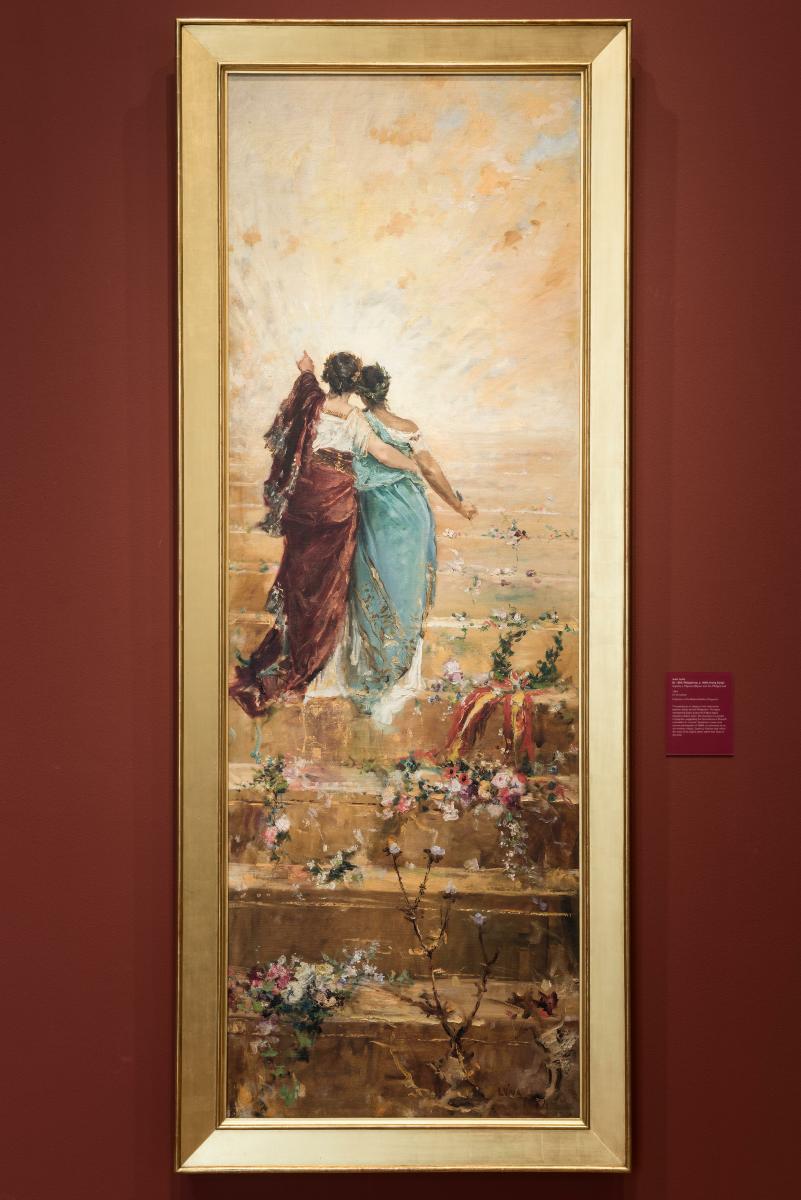España y Filipinas (Spain and the Philippines), Juan Luna, the Philippines, 1884, oil on canvas.
Collection of National Gallery Singapore.
Juan Luna (1857-1899) was born in Badoc, the Philippines. He began his studies in art practice in Manila but moved to Europe later to further his practice. During his lifetime, the Philippines was wreaked by revolution and struggles for independence from Spain. Luna himself would fight for Philippine independence in his later years.
España y Filipinas is an allegorical painting, using two female figures to represent the colonial relationship between Spain and the Philippines. Juan Luna was an accomplished academic painter, and this painting shows his mastery of 19th century visual conventions. The work was painted at the height of Luna’s career, following public acclaim for his monumental canvas, Spoliarium. There are multiple versions of this painting, with this version having been made for Luna’s friend, the nationalist intellectual Pedro Paterno. While Spain is clearly the dominant figure, shown as guiding the Philippines and pointing to the way forward, the two figures are nonetheless relatively similar in stature and dignity, suggesting that the composition is intended to represent a benevolent and idealised image of the colonial project. The work therefore represents the reformist aspirations of certain 19th century Filipino intellectuals towards a more equitable and less exploitative colonial relationship with Spain. A later allegory by Luna on the same subject—inspired by the Paterno version - was commissioned by the Spanish Ministry of Overseas Affairs and shown at the 888 Universal Exposition in Barcelona, indicating that the artwork also played an active public role in colonial propaganda.
This is an extract from "The Singapore Story through 60 objects" written by Kennie Ting, Director, Asian Civilisations Museum and Peranakan Museum & Group Director of Museums, National Heritage Board. Research for this article is supported by National Gallery Singapore. This article was first published in Cultural Connections Volume IV 2019 by Culture Academy Singapore.
















